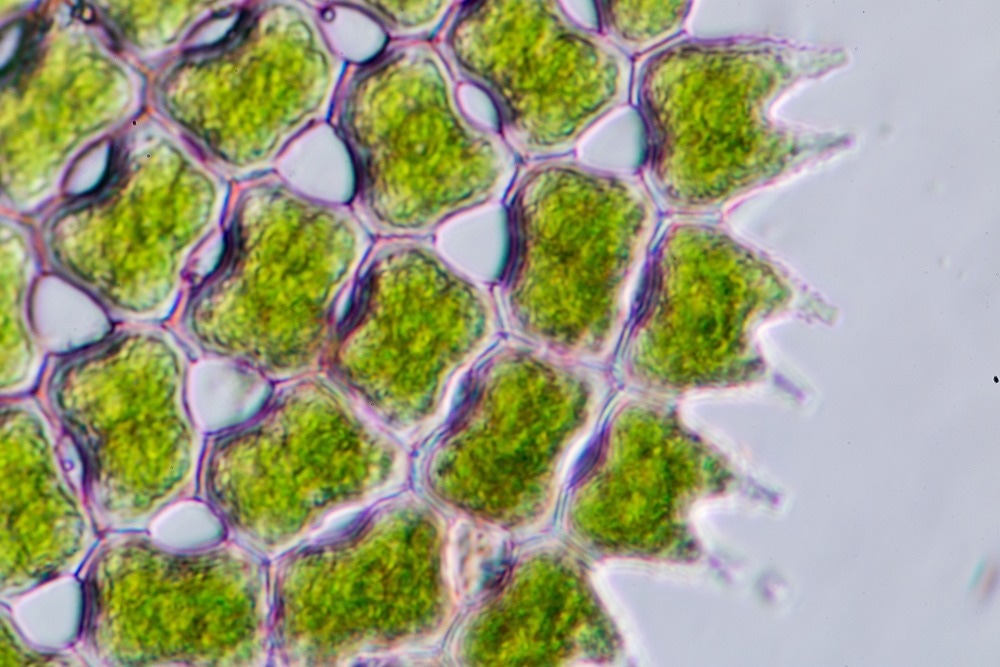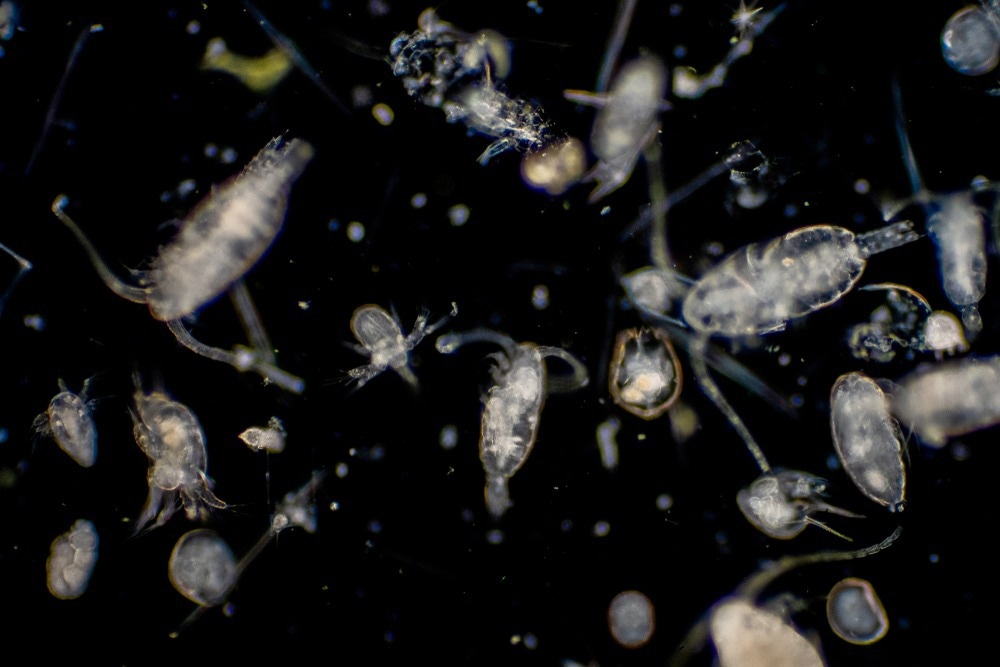Supplemented with deep learning algorithms, a novel holographic microscopy technique proposed in eLife provides a deeper understanding of microplankton and their influence on the global carbon cycle.

Image Credit: Rattiya Thongdumhyu/Shutterstock.com
Plankton: The Ocean's Green Machines
Plankton are one of the most significant marine organisms. They are the foundation of marine food chains, sustaining higher-up animals, plants, and, indirectly, human populations through fisheries.
Phytoplankton create more than half of the world's oxygen. In addition, they absorb CO2 via photosynthesis at a rate equivalent to that of forests and other plants. When phytoplankton die, a portion of this carbon is stored in the deep sea, and the rest is redistributed to various ocean divisions when other organisms consume them.
These biological carbon pumps transport around 10 gigatons of CO2 annually from the air to the sea. Even minor changes in phytoplankton growth can influence atmospheric CO2 concentrations, which would significantly affect global surface temperatures.
Therefore, studying microplankton and monitoring their location and dry mass is essential for understanding and controlling the global carbon cycle.
Limitations of Conventional Microscopy Techniques to Study Microplankton
Conventional plankton sampling methods concentrate on vast colonies of microorganisms and lack the resolution to examine the behaviors and activities of individual plankton across ecological scales. As a result, plankton's influence on marine ecosystems is still considerably less known than macro-organisms, which are easier to investigate at the individual level.
The oceanic microbial food web's rates and fluxes are still primarily estimated from indirect measurements or ensemble averages, resulting in a limited understanding of microplankton.
While these approaches provide reasonable estimates of biomass flux magnitude, they do not address the small-scale individual dynamics and ingestion of non-chlorophyll-bearing particles that drive large-scale phenomena, resulting in an underestimation of carbon transfer. Furthermore, indirect measurements rely on assumptions that aren't always accurate for activities like micro-zooplankton feeding.
Current methods for estimating individual biomass typically involve estimating from volume-to-carbon correlation established over time for various planktonic trophic clusters. These methods require cell sizing and counting followed by elemental analysis but do not facilitate the continuous assessment of the same organism. However, the average variation of each data point from the regressed expression surpasses 50%, indicating that these regression relations are not particularly accurate.
The dry mass of individual cells with the same volume might vary by some fractions, which is undetectable by volume-to-carbon correlations. Therefore, additional tools are required to track individual microplankton for long periods, continually monitoring their development rate and predation events, to advance further than the current level of precision in marine microbial food webs.
Continuous measurements are achievable using holographic microscopy. However, its full potential is yet to be achieved, particularly for the quantitative study of individual planktonic development and feeding patterns over extended periods. This might be due to the high computational cost of the data collection and processing pipelines.
AI-Assisted Holographic Microscopy Provides Insights into the Life of Microplankton
Researchers at the University of Gothenburg devised a method that combines holographic imaging and deep learning algorithms to monitor microplankton's location and dry mass throughout their lifetime.
The microscopy-based technology gives new information on the lifecycle of ocean plankton, hence providing a better understanding of the global carbon cycle.
In experimentation, the lens-less holographic imaging system employed a narrow-band 632 nm LED light source to highlight plankton arranged in circular wells, with a 1280x1024 pixel CMOS sensor placed beneath the samples.
Plankton's size, lateral location, refractive index, and axial orientation are determined from the diffraction patterns created by the interference of their scattered light and unscattered light. The scattering cross-section then estimates the dry mass, which helps track the carbon cycle.

Image Credit: Choksawatdikorn/Shutterstock.com
The coherence length of the light source limits the amount of water observed by holographic microscopy. Still, researchers suggest that simple adjustments to its proof-of-concept platform could enable the same lens-less approach to be modified for larger organisms, including crustaceans and smaller organisms like bacteria.
Significance of this Research in Understanding the Global Carbon Cycle
The primary benefit of integrating deep-learning algorithms with holographic microscopy is the ability to track individual plankton locations and dry mass over an extended period.
The technology is non-destructive and minimally intrusive, permitting quantitative monitoring of various trophic interactions, such as biomass growth and feeding throughout the plankton cell cycle, which can influence the global carbon cycle.
The proposed combination rivals the accuracy and precision of current techniques while outperforming them in terms of individual resolution and speed. Holographic microscopy has already been used in marine sciences, but when combined with deep-learning algorithms, it becomes much more adaptable and quicker, essential for tracking and identifying microplankton throughout their lifetimes.
Since microplankton drive large-scale processes and are the foundation of the ocean food web, the new technique enables us to better comprehend the impact of these tiny species on the global carbon cycle.
More from AZoOptics: The First Multi-Color Integrated Laser
References and Further Reading
Bachimanchi, H., Midtvedt, B., Midtvedt, D., Selander, E., & Volpe, G. (2022). Microplankton Life Histories Revealed by Holographic Microscopy and Deep Learning. eLife 11:e79760.. https://doi.org/10.7554/eLife.79760
University of Gothenburg. (2022). Holographic Microscopy Reveals the Lives of Microplankton. [Online]. Optics.org. Available at: https://optics.org/news/13/11/8 (Accessed on December 10 2022).
Nayak, A. R., Malkiel, E., McFarland, M. N., Twardowski, M. S., & Sullivan, J. M. (2021). A Review of Holography in the Aquatic Sciences: In Situ Characterization of Particles, Plankton, and Small Scale Biophysical Interactions. Frontiers in Marine Science, 7, 572147. https://doi.org/10.3389/fmars.2020.572147
Disclaimer: The views expressed here are those of the author expressed in their private capacity and do not necessarily represent the views of AZoM.com Limited T/A AZoNetwork the owner and operator of this website. This disclaimer forms part of the Terms and conditions of use of this website.